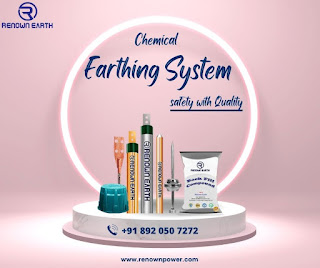Top 7 Things to Consider When Designing a Lightning Protection System
A lightning protection system's role is to protect buildings from fire or mechanical damage, as well as to keep people in buildings from being wounded or killed. An entire lightning protection system includes both exterior and interior lightning protection.
It reduced the
potential differences induced by lightning currents by lightning equipotential
bonding. We accomplish it by connecting all isolated conductive portions of the
system with conductors or surge protectors.
Chemical
earthing is a
classic earthing procedure in which chemicals such as bentonite/graphite-based
compounds are put into earthing pits to aid improve soil quality and reducing
soil resistance.
To
give you a quick idea of how to design a lightning
protection system, here are 7 key points.
1. The first and most important thing is to collect accurate data sets.
Accurate data plays an important role and is the critical factor needed to design a lightning protection system. Therefore, the main data to collect are related to the size, location, and environmental factors of the building/structure. If the data is approximate or incorrect, they will also reflect it on the recommendation.
2. What to do with "accurate" data collected for a specific building/structure
The next big step, risk assessment, has arrived! This determines whether the building needs external LPS or SPD, both, or neither. If protection is required, use the collected data as input to the risk assessment tool to calculate the risk level, which is available for free in your browser. Our Risk Assessment Calculator is an automated software built as per IS/IEC 62305-2 to facilitate risk calculations and is validated against the examples given in IS/IEC 62305-2.
3.
Determining the need for protection based on risk assessment
If you do your risk assessment correctly and provide accurate data, your level of protection is just right!
Here are some options:
·
If a building or structure needs external protection, this is
its Surge Protection.
·
If the building or structure requires internal protection, its
lightning rod.
·
If the building or construction requires internal and external
protection.
·
Protection is not required if the building or structure is
already safe and its calculated value is below the allowable level.
4.
Determine the level of protection
Once the level of protection is determined, the next step is to design the lightning protection system according to the level of protection. According to IS/IEC 62305, any building/structure should be designed for four levels of protection. The first level provides the highest level of protection, while the fourth level provides the lowest level of protection.
5.
Determining the Design Method
Once the level of protection is determined, the next interesting step is to choose the best method of lightning protection. There are 3 different ways:
- Network method.
- Corner protection law.
- Track-ball method.
To
get the best smart solution, you can combine the above methods to find a
solution. The rolling ball method is one of the most widely used and should be
used in all industries and all major facilities.
6.
A checklist to consider after choosing a method
See IS/IEC 62305:
·
Network dimensions for specific considerations of Earthing
Electrode.
·
Rolling ball radius.
·
Protection corners. Chapter
·
The distance between two lower conductors. The best option for an
article
·
To achieve maximum security and maximum profitability.
All the
above settings are based on your protection level, so be smart and don't get
confused. If you choose the wrong level of protection for your
building/structure, all your next steps will go wrong and your
building/structure may not be safe in the event of a lightning strike.
7.
Bill of Materials and Cost Estimate
So, after designing the LPS, what do you need to do?
Access the bill of materials and estimate the price of the lightning protection system. Finally, your building/structure has a lightning protection system that complies with Indian and international laws and regulations. After you can install a lightning protection system and you don't have to worry about the impact of lightning striking your building/structure!
Renown Earth has always
placed a premium on producing high-quality earthing solutions. With product quality,
we never cut corners. We are well known in the market as a leading chemical earthing manufacturer and
distributor in India.
We feel that paying great
attention to deliverables is essential. Positive feedback has resulted from our
efforts. Our unwavering commitment to providing the finest service possible to
our clients distinguishes us.
Download our catalog to
learn more about their world-class Lightning Protection systems. Renown Earth
is renowned as one of the top chemical earthing producers, always eager to
assist customers. Above all, you can contact us by email or by phone. You've
arrived at the correct location. Our team will do all the necessary to deliver
brilliance to your door.




Comments
Post a Comment